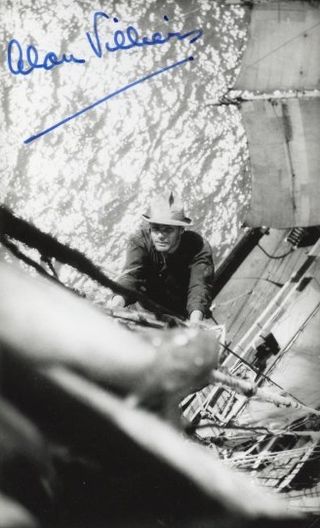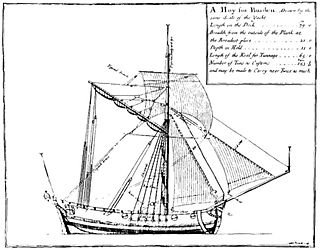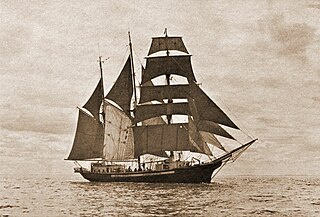Annie Hill | |
|---|---|
| Born | 1955 (age 67–68) |
| Occupation | Sailor |
| Spouses |
|
Annie Hill (born 1955) is a British sailor. She is best known as an author of books and articles about sailboat voyaging, living on a small amount of money, and sailing junk rigs.
Annie Hill | |
|---|---|
| Born | 1955 (age 67–68) |
| Occupation | Sailor |
| Spouses |
|
Annie Hill (born 1955) is a British sailor. She is best known as an author of books and articles about sailboat voyaging, living on a small amount of money, and sailing junk rigs.
This section of a biography of a living person does not include any references or sources .(August 2007) |
Annie Hill was born in Liverpool, England, United Kingdom, Europe.[ citation needed ]
Hill has been voyaging and living aboard various sailing yachts since 1975. Her book Voyaging on a Small Income is a study in the economics of continual travel and self-sufficiency. Hill writes using distinct British vernacular and colloquialisms.[ citation needed ]
Hill's first two books concerned voyaging aboard Badger, a 34-foot (10 m) double-ended dory with a two-masted junk rig of the schooner style, which was built by Annie and her first husband, Pete Hill. Badger was designed by Jay Benford for plywood construction. Annie's analysis and comparison of the modern junk rig is at least partly responsible for the recent re-popularization of the junk rig.[ citation needed ]
Hill continued her sailing aboard Iron Bark, a 35-foot (11 m) steel gaff cutter. She and Pete divorced in 2001. She now travels with her second husband, Trevor Robertson. In 2004 and 2005, they spent the winter on Iron Bark frozen in a remote bay in Greenland.[ citation needed ] She is now based in New Zealand, where she lives aboard a 26-foot (8 m) fibreglass boat, Fantail, which she converted to a junk rig in 2011.
In 2021 she launched her new 26-foot (8 m), whole junk-style plywood boat FanShi.
Hill has covered more than 165,000 nautical miles (306,000 km; 190,000 mi) under sail.
In March 2010, Hill and Trevor received one of the most prestigious awards in the sailing world, the Blue Water Medal of the Cruising Club of America. [1]

Star of India is an iron-hulled sailing ship, built in 1863 in Ramsey, Isle of Man as the full-rigged ship Euterpe. After a career sailing from Great Britain to India and New Zealand, she was renamed, re-rigged as a barque, and became a salmon hauler on the Alaska to California route. Retired in 1926, she was restored as a seaworthy museum ship in 1962–3 and home-ported at the Maritime Museum of San Diego in San Diego, California. She is the oldest ship still sailing regularly and also the oldest iron-hulled merchant ship still afloat. The ship is both a California Historical Landmark and United States National Historic Landmark.

Dinghy sailing is the activity of sailing small boats by using five essential controls:

The GP14 is a wooden or fibreglass hulled double-handed fractional Bermuda rigged sailing dinghy designed by Jack Holt in 1949.

Colin Archer was a Norwegian naval architect and shipbuilder known for his seaworthy pilot and rescue boats and the larger sailing and polar ships. His most famous ship is the Fram, used on both in Fridtjof Nansen's and Roald Amundsen's polar expeditions.

Alan John Villiers, DSC was a writer, adventurer, photographer and mariner.
The sport and practice of single-handed sailing or solo sailing is sailing with only one crewmember. The term usually refers to ocean and long-distance sailing and is used in competitive sailing and among Cruisers.

The 18 ft Skiff is considered the fastest class of sailing skiffs. The class has a long history beginning with races on Sydney Harbour, Australia in 1892 and later in New Zealand. The boat has changed significantly since the early days, bringing in new technology as it became available. Because of the need of strength, agility and skill, the class is considered to be the top level of small boat sailing. Worldwide this boat is called the "18 Foot Skiff". It is the fastest conventional non-foiling monohull on the yardstick rating, with a score of 675, coming only third after the Tornado and Inter 20.

The junk rig, also known as the Chinese lugsail, Chinese balanced lug sail, or sampan rig, is a type of sail rig in which rigid members, called battens, span the full width of the sail and extend the sail forward of the mast.
Arthur Piver was a World War II pilot, an amateur sailor, author, printshop owner and renowned boatbuilder who lived in Mill Valley on San Francisco Bay and became "the father of the modern multihull."

Tradewind is a Dutch topsail schooner. She was built in the Netherlands in 1911 as a herring lugger named Sophie Theresia.
Solo is an Australian ex-ocean racing yacht, winning over 80 races during her eight-year racing career, all on the east coast of Australia. Solo has circumnavigated the world three times, circumnavigated Australia twice and was charted for two Antarctic expeditions. All of these achievements plus many more have earned her the title "The lady of the sea".

Rose Hill Packet, was a marine craft built in Australia to serve the second place of European settlement in Australia, "Rose Hill", the furthest navigable point inland on the Parramatta River. When launched the vessel was named Prince William but was later named the Rosehill Packet by the convicts. The boat design was later called a packet boat, because its use was that of running the first Parramatta River trade ferry, passenger, cargo, and mail service between the Sydney Cove and the Rose Hill (Parramatta) First Fleet settlements after she was launched in Sydney Cove in September and commissioned on 5 October 1789. She was the first purpose-built sailing vessel constructed in Australia. She later earned the nickname 'The Lump'. Some authorities believe that a 1790 drawing by First Fleet MIdshipman George Raper shows the vessel in the centre of Sydney Cove.
James Wharram was a British multihull pioneer and designer of catamarans.

The sailing ship Regina Maris was originally built as the three-masted topsail schooner Regina in 1908. She was a 144-foot (44-meter), wooden, completely fore-and-aft–rigged sailing ship with three masts. She was re-rigged in 1963 as a 148-foot (45-meter) barquentine. Regina Maris could reach a speed of up to 12 knots, especially on a half-wind course or with a fresh back-stay breeze.

The pinas, sometimes called "pinis" as well, is a type of schooner of the east coast of the Malay peninsula, built in the Terengganu area. This kind of vessel was built of Chengal wood by the Malays since the 19th century and roamed the South China Sea and adjacent oceans as one of the two types of traditional sailing vessels the late Malay maritime culture has developed: The bedar and the pinas.
The Silhouette also called the Silhouette 17, is a British trailerable sailboat that was designed by Robert Tucker as a pocket cruiser and first built in 1954.

The Sirius 20, 21 and 22 are a family of Canadian trailerable sailboats that was designed by Hubert Vandestadt for cruising and first built in 1976.
The Helms 24 is an American trailerable sailboat that was designed by Stuart Windley as a cruiser and first built in 1977.
The Pacific Seacraft 25 is an American trailerable sailboat that was designed by Henry Mohrschladt as a cruiser and first built in 1976.
The Venture 21 is an American trailerable sailboat that was designed by Roger MacGregor as a racer-cruiser and first built in 1966.